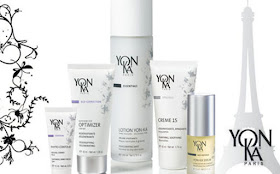A definite misunderstanding surrounds these two separate conditions that are thought to be the same. No wonder you are confused! In the title I put quotation marks around “dry” because so many people I see come in saying they they have dry skin when really they are simply dehydrated.
Dehydrated skin is skin where the outer skin cells are not retaining enough water to keep the skin feeling hydrated. There is usually an excessive buildup of dead cells on the surface of dehydrated skin, therefore exfoliation is necessarily (manually removing the dead skin) in order to relieve the condition. No amount of moisturizing (piling on layers of face creams) will truly fix the problem, but through regular and thorough exfoliation, you can greatly reduce or eliminate dehydration. In short, dehydrated skin is lacking water retention and needs exfoliation.
Dry skin or what I call true-dry skin is oil dry. It simply does not emit much or enough oil. Therefore this skin usually does not have blackheads, whiteheads, and almost never has breakout. True-dry skin needs moisturizing to help add oil to its oil-deficient surface. Exfoliation can help, but what is really needed is proper moisturizing with creams to lubricate the oil-deficient outer skin.
A common mistake people with dehydrated skin make is to over-moisturize. Because their skin feels dry, it seems logical to give the skin more moisture. With true-dry skin this is fine. But if your skin is emitting enough or in some cases too much oil, over-moisturizing is where the problems can really begin. You start off with dehydration and can end up with congestion or breakout on top of the dryness (dehydration).
Making the distinction between dry and dehydrated skin is imperative. Without knowing which skin condition you have, you could really cause problems down the road.
OK, so my skin is dehydrated, not dry. What should I do?
A common mistake people with dehydrated skin make is to over-moisturize. Because their skin feels dry, it seems logical to give the skin more moisture. With true-dry skin this is fine. But if your skin is emitting enough or in some cases too much oil, over-moisturizing is where the problems can really begin. You start off with dehydration and can end up with congestion or breakout on top of the dryness (dehydration).
Making the distinction between dry and dehydrated skin is imperative. Without knowing which skin condition you have, you could really cause problems down the road.
OK, so my skin is dehydrated, not dry. What should I do?
In a word—exfoliate! There are many methods you can use to get rid of the dead skin on your face. Gommage (soft
gel peel) is my personal favorite. There are other exfoliators like
papaya enzyme peels as well as AHA peels and so forth—all of which can
irritate sensitive skin. If your exfoliation system is causing
irritation or redness in your skin, you may want to switch to a more
gentle one. However you choose to do it, the way to get rid of dead
skin cells is to slough them off—or exfoliate.
Your skin will let you know when it’s time to exfoliate: when it feels
tight and dry. During the winter months, you may need to exfoliate more
often, maybe 2 or 3 times per week. This depends on your environment
(how dry the heat is in your home) and just how dry your skin feels.
Remember, exfoliation will relieve that dry feeling. By exfoliating
regularly, you can keep your skin soft and supple, even through a
rough, cold winter.
Hopefully you are beginning to understand the difference between dry (true-dry) and dehydrated skin. If you’ve read similar articles on this blog, you know I have tried to clear up this most important issue. As an aesthetician I continue to talk about this with my clients who come in thinking they have true-dry (oil-dry) skin when they are really dehydrated with an oily or normal to oily skin type.
Hopefully you are beginning to understand the difference between dry (true-dry) and dehydrated skin. If you’ve read similar articles on this blog, you know I have tried to clear up this most important issue. As an aesthetician I continue to talk about this with my clients who come in thinking they have true-dry (oil-dry) skin when they are really dehydrated with an oily or normal to oily skin type.
Please read the following to become more familiar with this subject—for your skin’s sake!
- Using dry skin products on oily skin—STOP THE INSANITY!
- Is Your Skin Truly Dry or Just Thirsty?
- True-Dry Skin explained
- Dehydrated Skin explained






































